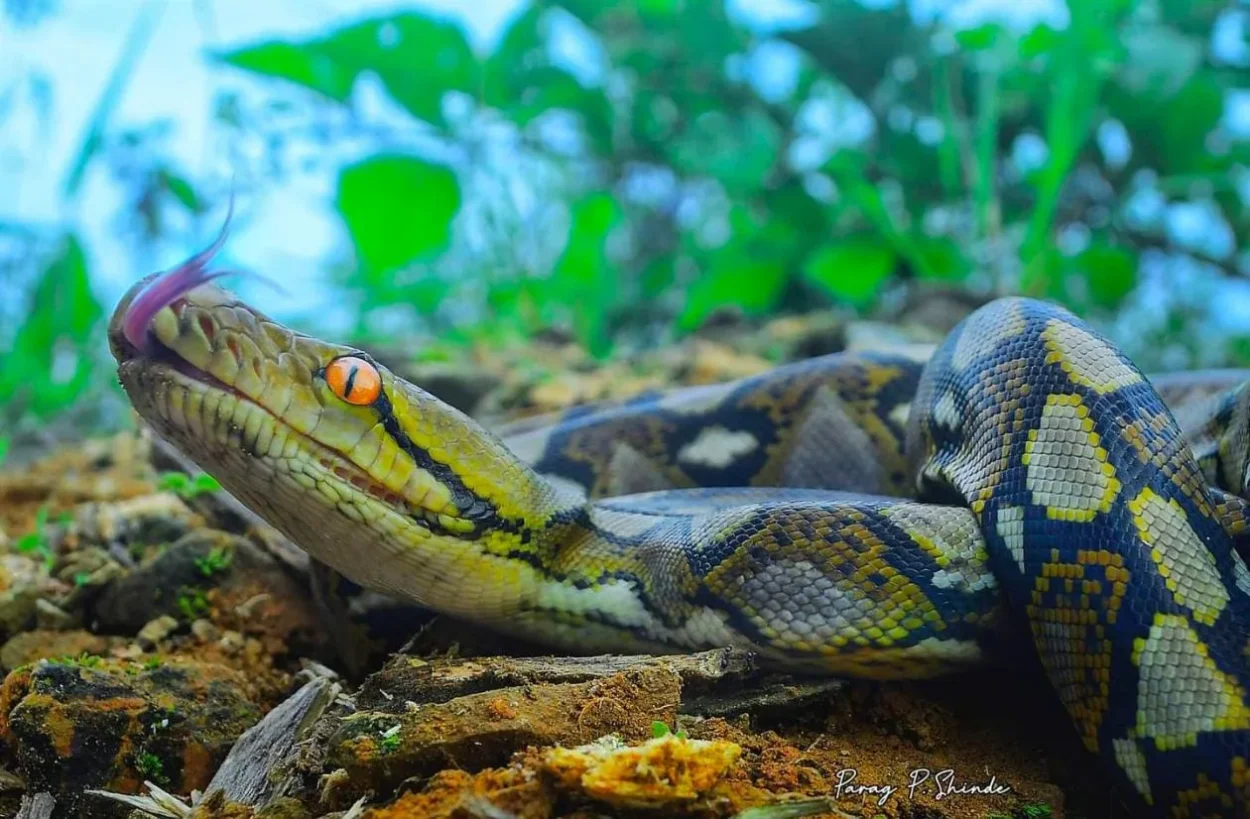Mizoram University researchers identify reticulated python in mainland India

A team of biologists from the Developmental Biology & Herpetology Laboratory, Department of Zoology, Mizoram University led by Prof HT Lalremsanga found a rare species of python – Malayopython reticulatus in mainland India.
The reticulated python is the longest snake in the world with an average length of upto 6.5 meters. There are some records of this species consuming humans as prey. They are native to South Asia and South East Asia.
The researchers team documented Malayopython reticulatus from three southern districts of Mizoram (Lunglei, Lawngtlai, and Siaha) and these records from Mizoram bridge the known ranges in the adjacent countries of Bangladesh.
The researcher team and their collaborate Oliver SG Pauwells, a Belgian zoologist & curator at the Royal Belgian Institute of Natural Sciences confirmed the occurrence of reticulated python from Mizoram, mainland India based on mitochondrial DNA and data of individuals collected from the southern part of Mizoram.

Their findings were published in the international scientific journal, Taprobanica (The Journal of Asian Biodiversity) volume no 13 (issue 01) on May 30.
Globally, there are 38 species of python under the family pythonidae. Of these, India harbours 3 species, Burmese python (Python bivattatus), Indian Rock python (P. molurus) and Reticulated python (Malayopython reticulatus).

In India, they are known to occur in Nicobar Islands only, but not in the mainland. Earlier records in West Bengal leh Mizoram are orphaned and need further verification.
“Many individuals were encountered in the southern part of Mizoram, still many scientists couldn’t accept its presence in mainland India. I hope this work will shatter the earlier prediction,” Hmar T Lalremsanga said.
According to their studies, the natural distribution of reticulated python not only include the Nicobar Islands, but also the mainland in India disproved the earlier concepts.
“It is also found that the mitochondrial DNA of this python from India is close to that of reticulated python from Java (Indonesia) with only 0.6% genetic divergence while it can be 5:4% with others from South East Asia (location not specified),” Prof HT Lalremsanga said.
“Between the other 2 pythons in India, Burmese python (python bivattatus) and Indian rock python (P molurus), there is a very less (2.3%) genetic divergence, while there are 4.7– 5.0% intraspecific variation among individuals of Burmese python. This needs further taxonomical assessment on these species from various geographical locations,” he said.
Given that the majority of the database sequences of P molurus from the Indian subcontinent are of unusually short fragments, and also considering the possible hybridization between the two species among invasive populations in the USA, we excluded those shorter sequences as well as those originating from the USA in our analyses.
“We suggest extensive work to acquire more genetic data on pythons from their natural home range that will be critical not only for the conservation and integrity of the native populations but also for the identification and ongoing investigations of the seized animals to enforce international and national legislation,” he further said.
“Our study also reveals multiple lineages among M reticulatus, corroborating previous studies, and further reveals the absence of a barcode gap between sequences submitted as P molurus and P bivittatus among the sampled DNA sequences, and an unexpected lineage of Northeast Indian P bivittatus based on a sample divergent from the East and South East Asian populations that will need further systematic assessment,” Lalremsanga also said.
Python molurus is listed in Appendix I while all other Pythonidae species are listed in Appendix II of the Convention on International Trade in Endangered Species of Wild Flora and Fauna (CITES). The IUCN Red List of Threatened Species listed P molurus as Near Threatened, P bivittatus as Vulnerable, and M reticulatus as Least Concer.
In India, all members of the python genus are protected and listed in Schedule I under the Indian Wildlife (Protection) Amendment Act, 2022.
“We are convinced that P bivittatus is not rare and that it is widely distributed in the northern and the central part of Mizoram, while the M reticulatus population appears to inhabit the southern part of Mizoram. Therefore, they do not seem to co-exist syntopically in this state. Similarly, isolated populations of P bivittatus along the Nepalese borders and Northeast India (Assam) exist sympatrically, but not syntopically with P molurus as they avoid interbreeding with each other in occupying different habitat types,” Lalremsanga added.

Leave a Reply